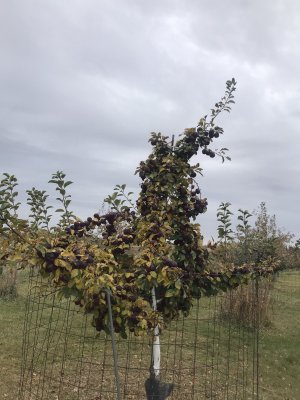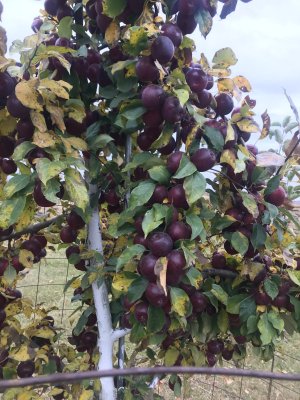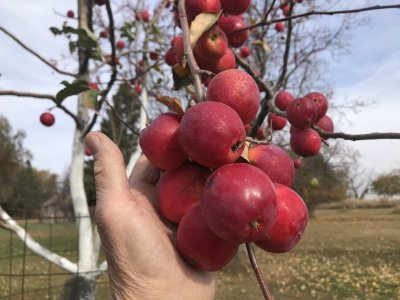Sandbur (or anyone with insight),
I really appreciate this thread and it has served me well in constructing my orchard. I noticed a reference to a "swamp" crab and was interested in whether there are any crabs/apples/pears that you are aware of that could withstand or thrive in wetter soils. I have an area of my farm that floods a couple of times per year for few hours. The soil dries out rather quickly and persimmons have been able to tolerate the flooding thus far. Any thoughts would be appreciated. I am in west central Illinois, zone 6 formerly 5b.
Got any pictures of the trees that didn't make it? Collar rot is a likely problem in wet areas. M7 or M111 rootstock would be best for that. What kind of soil do you have, how deep can you dig down until you hit rock or something like solid clay. Any way to improve drainage? MY backyard is alot better since I got the house. I put drainage channels in. Sometimes I get 3-5 days of saturated and flooded conditions. A few times I have had to replant grass seed. Trees that were here before me survived. The trunks are 14-18 inches around. Guessing P18 maybe. Got heavier clay soil. Common rootstock is more universally known. Stuff like dolgo or antonovka is not written about too much except with folks on here.
IF you dig around there was a thread maybe 2 years ago on wet rootstock. Callery crabapple seedlings were discussed. Could be an option too.
Oddly at home B118 is growing faster than M111 wth my 1st year or trying trees out. The 2nd year I purchased a large rototiller and amended more and bought almost all M111's to match my soil type. B118 is a very vigrously growing tree, for some too fast for the roots. Suspecting that might be my low pH. 5.3 or so. Working on that.
I have one or two spots that is too close for comfort far as flooding goes. I put 2 or 3 tractor buckets of soil and raised it up close to a foot taller.
Another issue is your soil prep. Ammending with alot of loose soil in a area of dense soil makes basically a bucket to hold water in. The mound basically puts it above the dense soil, so the looser stuff can drain. It is common landscape practice ot basically put potted plant on the ground and adding soil around it.
When I ammended I was careful to not add to much, and to compact the soil as I worked on it. You can use a shovel handle to push holes in the soil, add some over it and push around. Using your feet works. Breaking up the soil well before you bury the roots. Watering well then patting down the soil. Use your finger to push soil into the gaps between the roots.



